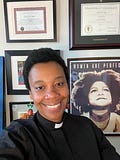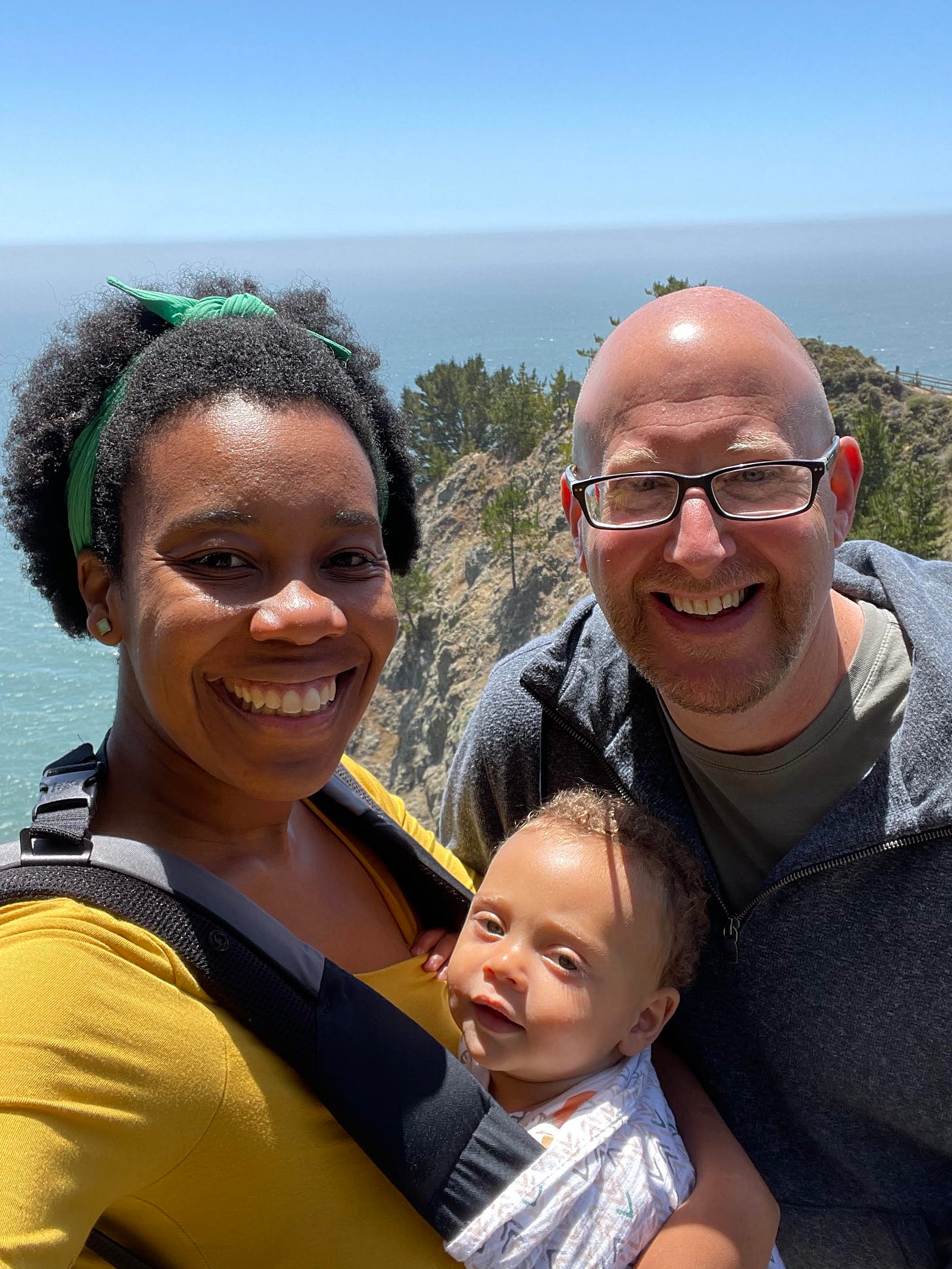In Jennifer Bailey’s beautiful new book, To My Beloveds: Letters on Faith, Race, Loss, and Radical Hope, she writes: “The hope of my foremothers is indeed rooted. Its tendrils reach deep into a history riddled with stories of trauma and triumph, grief and glee, drama and delight—from the coast of Western Africa to the fields of the Mississippi Delta.”
The book is, in a sense, a mapping of those roots and a practice of sacred appreciation. She looks closely at what is happening all around her, feels deeply, and writes about it—all in epistolary form.
I’ve only met Rev Jen, as she’s known, briefly, but I’ve been so moved by the way she moves through the world. It’s like she’s carving a path of her own making, living a life that seems invented out of her own professional, spiritual, and social imagining, but always reverent of the tools that are allowing her to invent, the people who bequeathed them to her, the complexity with which they were acquired. I just had to introduce you to her…
Courtney Martin: This deep little book is structured as a series of letters. How did you land on that?
Rev. Jen Bailey: I had been struggling to find an avenue to express all the big feelings I was having about the state of the world over the past two years—the pandemic, deepening political polarization, renewed attention the long legacy of structural violence against folks of color in the United States. I found myself yearning to talk to people that I loved—both those who were still with us and those who are now ancestors—to get their wisdom, insight, and advice.
Letter writing became a way for me to talk to those folks with whom I longed to be in conversation, while also allowing me to be in touch with the multiple identities that I hold. I sign each letter from a different social location/identity. For example, I sign a letter that details accompanying my mom during the last few months of her battle with cancer as “Cookie’s baby girl” and a letter to members of Generation Z as “An Auntie in Training.” It was powerful for me to be able to step outside the identities I most often inhabit and rediscover the parts of myself that I often allow to lay dormant.
You talk a lot about “radical hope”--can you define that and say why it matters so much to you, especially right now?
I understand radical hope to be the daily practice of believing that the material conditions of the world can be better and that we have the capacity to bring about that change in the here and now. I was raised by Black Southern women who endured the horrors of Jim and Jane Crow and who still had this tremendous sense of faith that was born of seeing progress and change over time.
They never downplayed the real pain of their experiences, but they always had a word of encouragement to “just keep living” when I was filled with despair. There are a whole lot of people who are in a place of despair right now, and I’m hoping this book and the wisdom of my foremothers can be an anchor for my readers to find the signs of radical hope in their own experiences.
I’ve been thinking a lot about the possibilities and pitfalls of integration, particularly at a young age. You write about the painful experiences you had going to a mostly White school as a little girl. Where has that landed you in terms of your level of "radical hope" about integration?
The concept of school integration has always been complicated for me. My mom was a part of the first integrated class in her high school’s history in the late 1960s in Cairo, Illinois. The city was one of the last to integrate schools in the state, and the decision occurred alongside a prolonged period of racialized violence that help accelerate the decline of the town. I remember my mom always talking about the difference she experienced in her schooling - when she attended segregated schools, she had Black teachers that invested in her education, encouraged her brilliance, and spoke life into her. That changed following integration.
I’m also a new mom of a 14-month-old, and I am yearning for a positive educational experience for my son. My vision of radical hope for Max’s education would center a curriculum that is reflective of the diversity of the student body, that tells the truth about history, and invests substantial resources in equipping educators with tools to identify and dismantle their own conscious and unconscious biases when it comes to matters of race.
Sometimes I worry that the invitation to bridge is issued too soon or too universally--without enough reverence for the pain that someone or some force (a political party, an economic policy etc.) has caused. As an expert bridge builder, how do you think about creating space for people's very understandable resistance to bridging at different moments?
I have believed for a long time that bridge-building work ought to be by invitation and not demand. Some people are just not ready to engage across lines of difference. That is why I think it is so important to be clear in the purpose and intention of building the bridge in the first place. There are three questions that I often ask folks interested in doing bridge-building work that I note in the book:
What are you bridging toward? Being clear about your commitments and intentions is fundamental in developing trust. When we are clear about what we are seeking to accomplish together we can manage our expectations accordingly.
What are you bridging over? The history of the United States is messy, complicated, and violent. Bridging work requires that we do not avert our eyes from the truth of stories, but rather that we honor that which is before us.
What is your bridge made of? I don’t know about you, but if I am going to work across differences to confront the horrors of white supremacy and a legacy of systemic inequality, I want a bridge built of steel, not sticks. It requires that each of us does our work to understand where our pain points are and how we need to sharpen our skills to listen with empathy and grace to the person sitting across from us.
You’re hosting a fantasy dinner party with three of your biggest influences, alive or dead? Who are they and what do you serve?
I’m 34 and have lost both of my grannies and my mom. So my dream would be to cook a meal of fried chicken, turnip greens, and mashed potatoes with all three of them and talk to them about motherhood - the lessons they learned, regrets they had, and what they wish they had known when they first gave birth.
We will be donating to the Faith Matters Network in honor of Rev Jen’s labor. Thanks Jen!
And speaking of foremothers…if you haven’t listened to my Meditative Story episode on the life of my grandmother and how it’s shaped my own, please do! It’s a really cool new structure for audio storytelling, and I think it’ll bring up important insights for you about your own ancestors.





